
The human relationship with Earth is an intimate one. The National Park System is tangible evidence of this connection. We have acted voluntarily to set aside these areas for preservation and learning and enjoyment for all. Many national parks were established to conserve the cultural history of our country. Cultural sites include archeological treasures such as the Pueblo cliff dwellings found in Bandelier National Monument; historical buildings and monuments, including the Statue of Liberty and Ellis Island National Monument; and sites of events that are of national importance, such as Kennesaw Mountain National Battlefield Park. The history of each park inevitably includes interesting human stories, both modern and ancient in origin. Explore the cultural history collection of Earth Observatory articles to learn more about the human stories in connection with our national parks and monuments.
Guiding Questions and Explorations
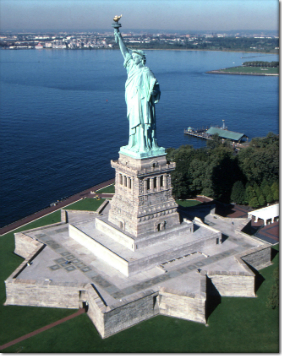
- Natural features of park areas attracted early indigenous inhabitants and European explorers to those sites. For example, ancient human dwellings are a focal point of both Bandelier National Monument and Canyon de Chelly National Park. Compare the characteristics of the parks that attracted early inhabitants with those that attract current visitors.
- More recent history is the focus of Fort Raleigh National Historic Site and Kennesaw National Park. Read the articles to discover the historical significance of each of these parks.
- Although some parks have iconic features or wildlife, one of the parks in this cultural history collection preserves a particularly American icon. After reading the article, describe the cultural significance of this site to you and to our country.
- The largest collection of Native American mounds in the U.S. is found in Iowa. Read the article on Effigy Mounds National Monument to identify some of the reasons why Native Americans and early settlers chose to live there.
- If you were an archeologist (scientist who studies past civilizations/artifacts), or an historian, which national park would you want to work in and why?
List of Parks:
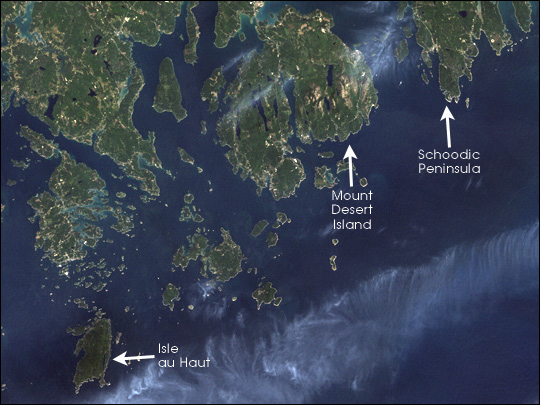 Acadia National Park
Acadia National Park
This first national park East of the Mississippi consists of 35,000 acres on two islands in a unique ecological transition zone. Local families campaigned and donated land to help create this park.
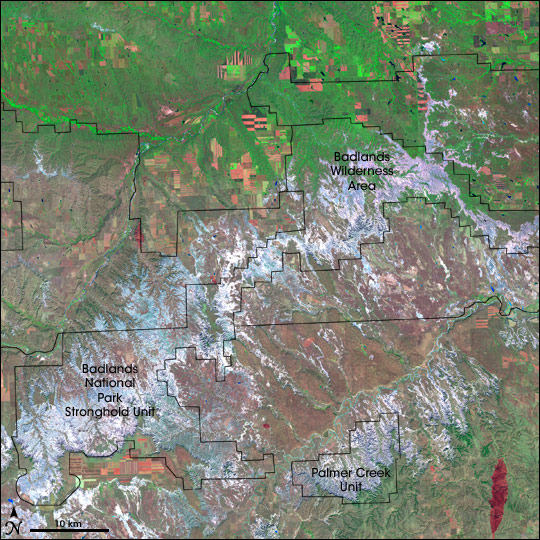 Badlands National Park
Badlands National Park
Partially co-managed by the Ogallala Sioux Tribe, the Badlands are named for their harsh weather and marginal conditions for agriculture. In this satellite view, the vegetation characteristics of the park can be clearly seen.
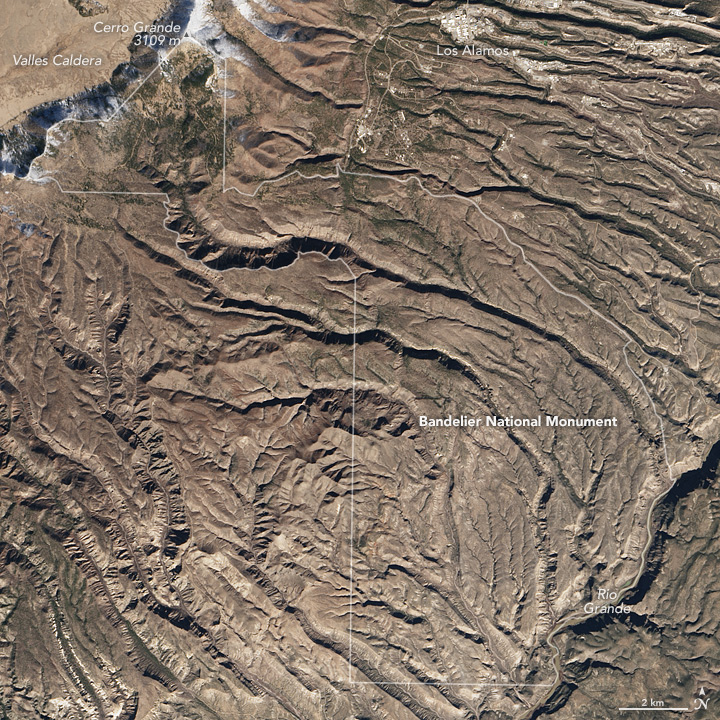 Bandelier National Monument
Bandelier National Monument
Bandelier National Monument was once covered by evergreens at higher elevations before they were wiped out in a fire. Now vegetated by shrubs and grasses Bandelier still protects the ancient dwellings of the Pueblo civilization.
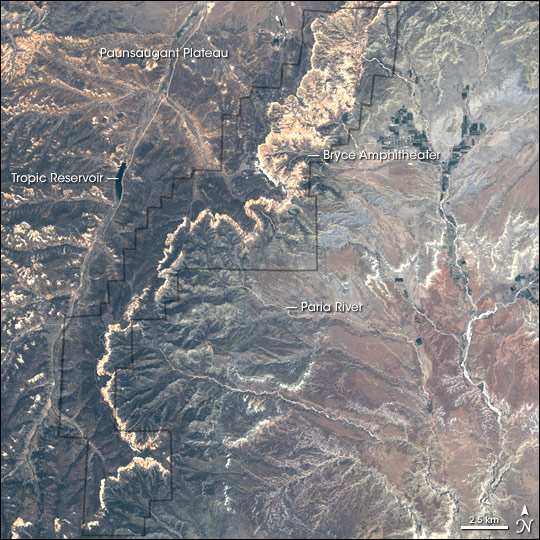 Bryce Canyon National Park
Bryce Canyon National Park
Inhabited by humans for nearly 10,000 years, and known for its rich collection of rock spires, known as "hoodoos," this satellite view reveals the varied rock and vegetation colors of the park.
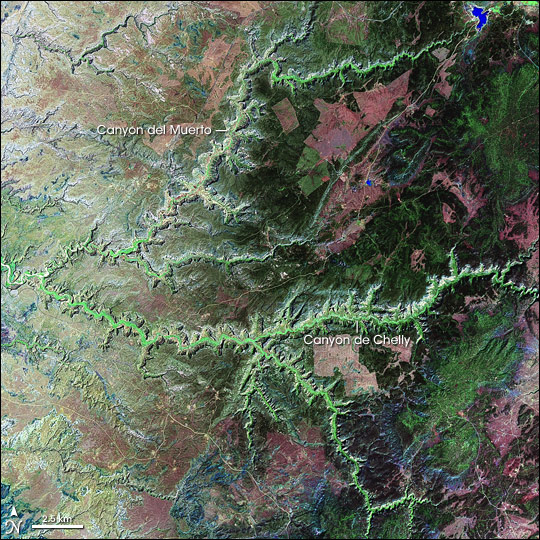 Canyon de Chelly National Monument
Canyon de Chelly National Monument
This monument is unique in the U.S. National Park system because it lies entirely on Navajo Tribal Trust Land. Members of the Navajo Nation still live in the rugged, harsh, and beautiful landscape.
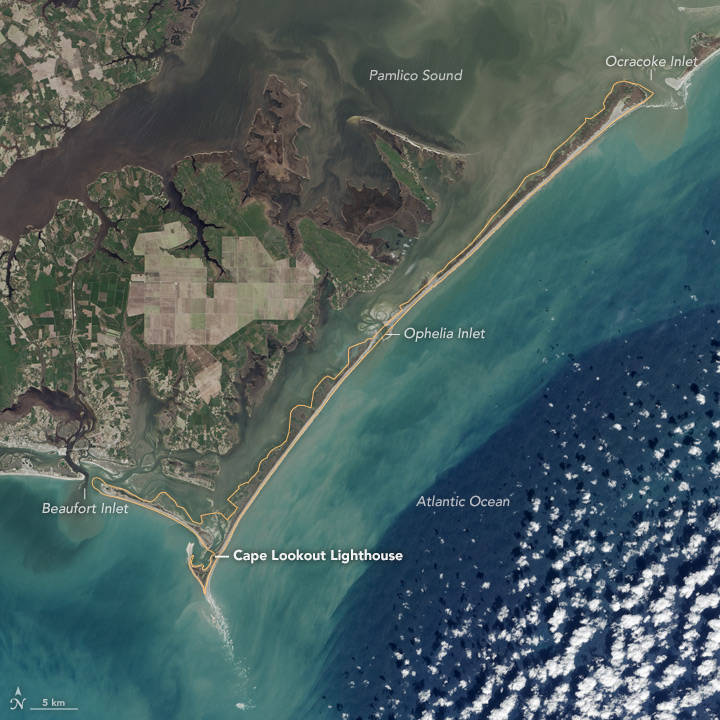 Cape Lookout National Seashore
Cape Lookout National Seashore
Cape Lookout National Seashore stretches 56 miles along the coast of North Carolina. Encompassing a string of narrow barrier islands, it offers a haven for loggerhead sea turtles and more than 275 species of birds.
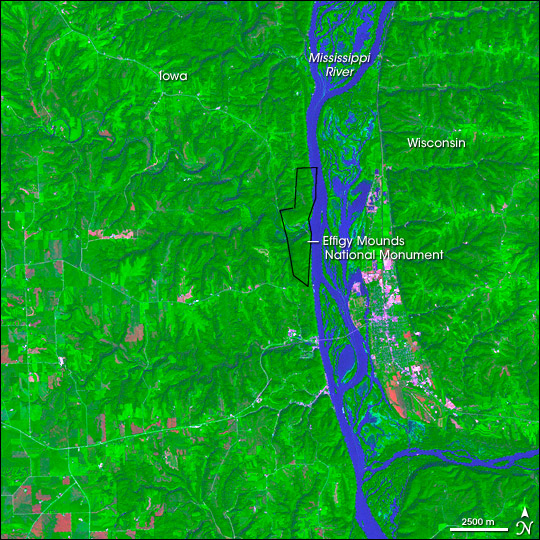 Effigy Mounds National Monument
Effigy Mounds National Monument
Effigy Mounds National Monument is the largest known collection of Native American mounds in the U.S. Geographical features of the region seen in this image help explain why human cultures have occupied this part of the country for so long.
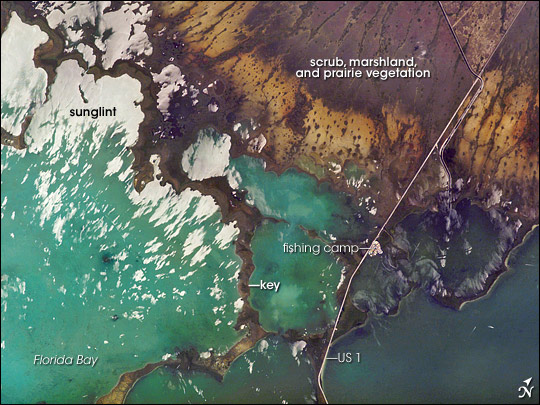 Everglades National Park
Everglades National Park
Everglades National Park in southern Florida is the largest subtropical wilderness in the United States. Known as the "river of grass," the Everglades wetlands and wooded uplands host a variety of endangered species.
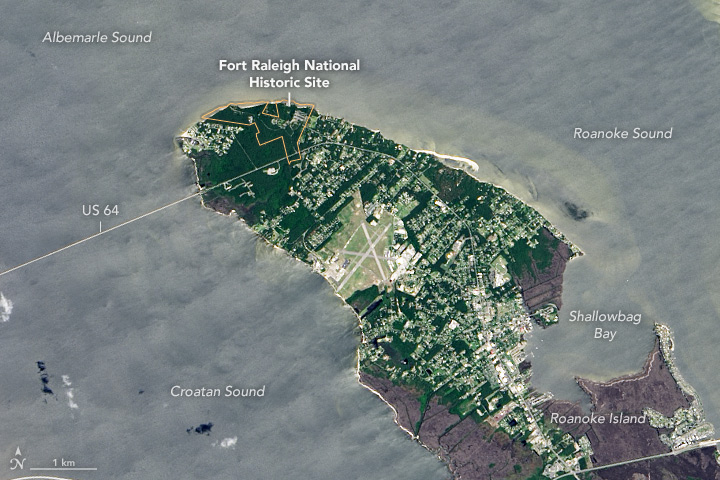 Fort Raleigh National Historic Site
Fort Raleigh National Historic Site
In the 16th century, settlers started a colony on Roanoke Island. Fort Raleigh preserves relics of England's attempts to colonize the New World, as well as the history of Native Americans, European Americans, and African Americans there.
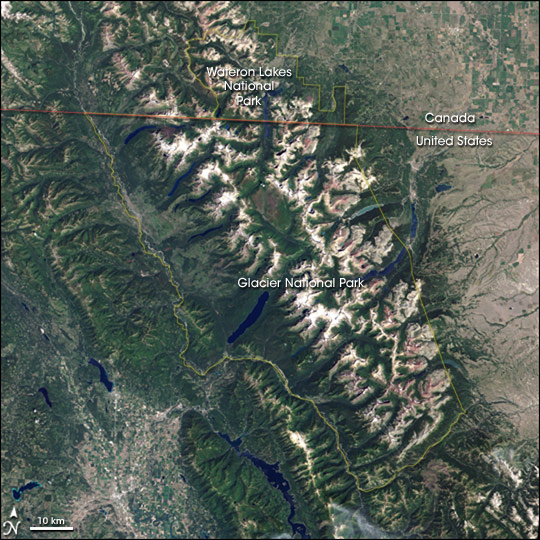 Glacier National Park
Glacier National Park
In combination with Canada's Waterton Lakes National Park, the area is the first International Peace Park, declared in 1932 to solidify the peaceful friendship between Canada and the United States and to protect ecology across the border.
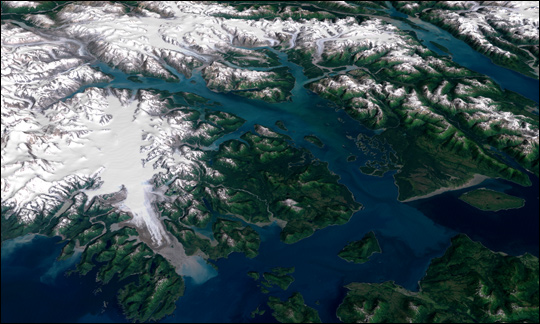 Glacier Bay National Park and Preserve
Glacier Bay National Park and Preserve
Glacier National Bay Park and Preserve has been declared as a UN Biosphere Reserve and a World Heritage site. As new land has been revealed by the retreating glaciers, a sequence of new species have gradually moved into the exposed areas.
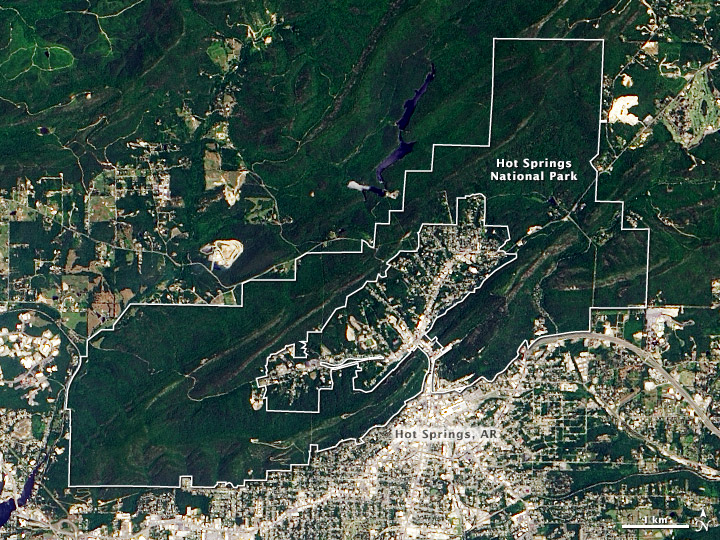 Hot Springs National Park
Hot Springs National Park
The natural hot springs for which this park and the surrounding city are named introduces water back to Earth's surface that has been underground for thousands of years.
 Kennesaw Mountain National Battlefield Park
Kennesaw Mountain National Battlefield Park
This parcel of undeveloped forests and hills was the site of a battle associated with the Civil War's Atlanta Campaign. Now, due to urbanization in the area, park rangers must balance preservation of the memorial with residential usage.
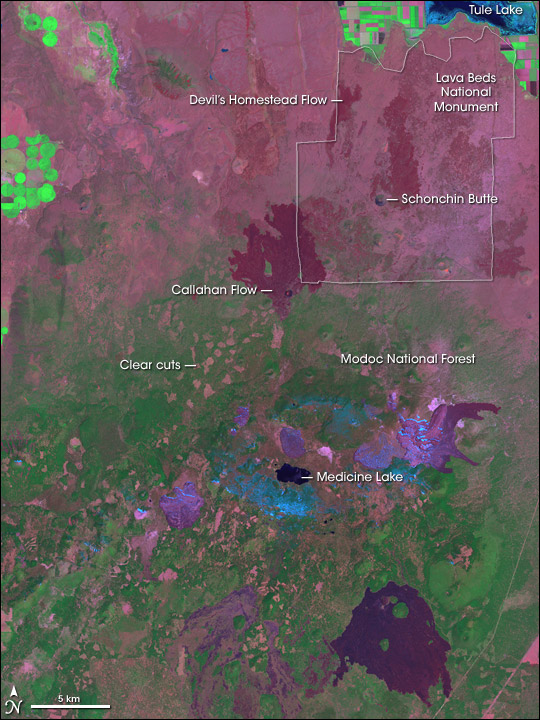 Lava Beds National Monument
Lava Beds National Monument
Selected for national monument status primarily in honor of a conflict during the 1872-73 Modoc War, the site features basaltic lava flows, cinder and spatter cones, and a network of caves from lava tubes.
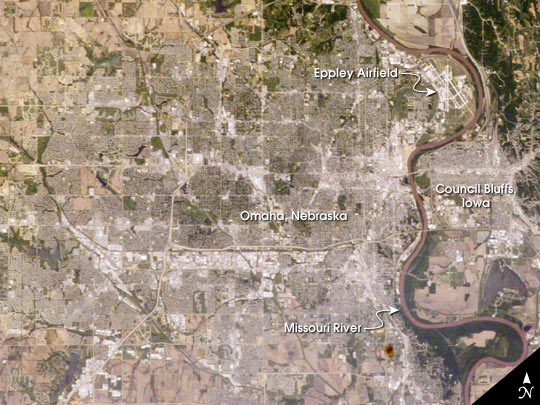 Lewis and Clark National Historic Trail
Lewis and Clark National Historic Trail
The Missouri River served as a vital waterway for transport of the epic Lewis and Clark Expedition. In the vicinity of Omaha, Nebraska, and Council Bluffs, Iowa, this mighty river meanders southward through a broad floodplain.
 Mammoth Cave National Park
Mammoth Cave National Park
This cave system consists of roughly 350 miles of known passages and nearly 600 additional miles of suspected passages, making it the largest known cave system in the world.
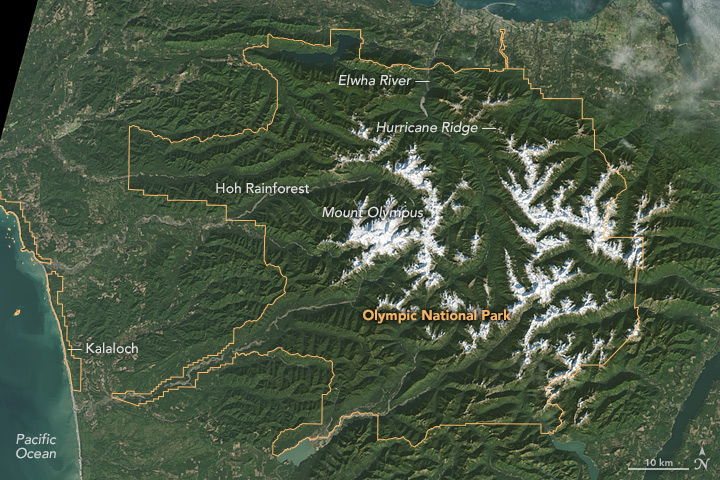 Olympic National Park
Olympic National Park
If you walked east across Olympic National Park, you would start at the rocky Pacific shoreline, move into rare temperate rainforests, ascend glaciers and rugged mountain peaks, and then descend into a dry rain shadow and alpine forest.
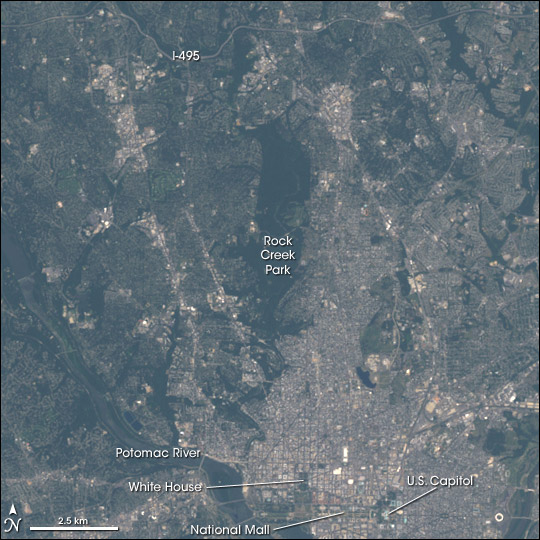 Rock Creek Park
Rock Creek Park
Rock Creek Park is a forested valley running through the District of Columbia along the banks of Rock Creek. The national park provides a green corridor from the heart of the city into the suburbs.
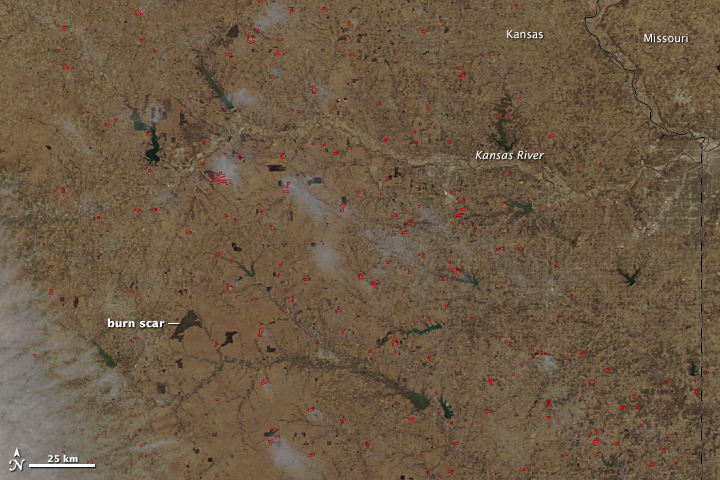 Tallgrass Prairie National Preserve
Tallgrass Prairie National Preserve
Fire is as much a part of the prairie landscape as grass. Before settlement, tallgrass prairie covered 170 million acres of North America. Today, less than 4% of the prairie remains, but fire is still a critical component of the ecosystem.
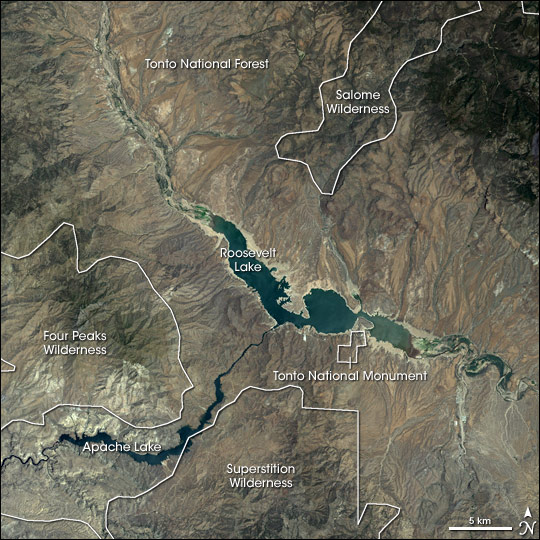 Tonto National Monument
Tonto National Monument
Tonto National Monument lies in the midst of the Tonto National Forest near Phoenix, Arizona. Cliff dwellings and cave homes can be found here, as well as Sonoran desert vegetation like the iconic saguaro cactus.
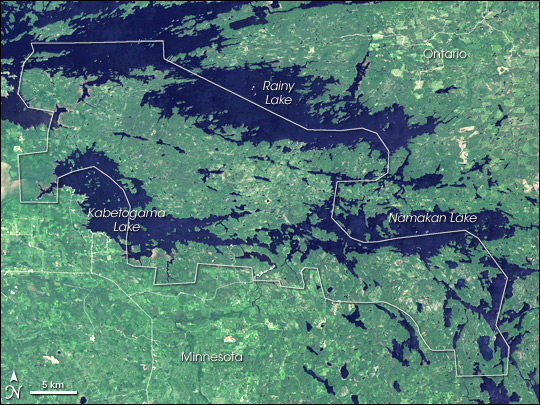 Voyageurs National Park
Voyageurs National Park
Park visitors wanting to experience the park to its fullest must leave their cars behind. Almost a third of the park is water, and travel through the park is usually by boat. The forested landscape belies the region's ice age past.
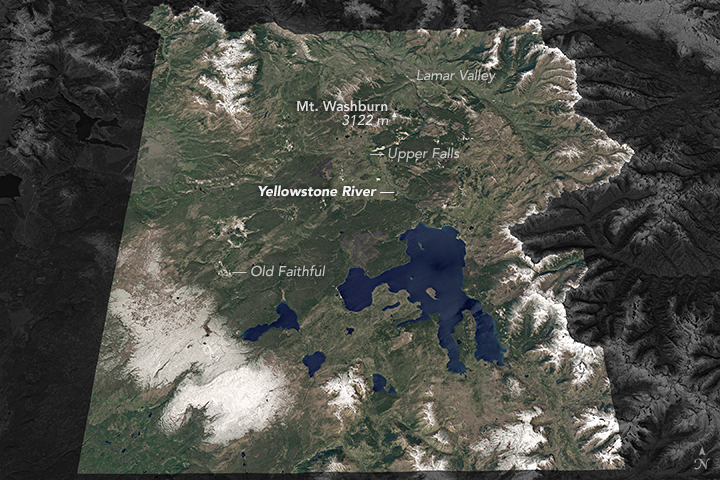 Yellowstone National Park– Landscape
Yellowstone National Park– Landscape
Established in 1872, Yellowstone was the first national park in the United States. The park exemplifies the spirit and purpose of the National Park Service, blending modern and ancient human history with nature in its raw complexity.


 Acadia National Park
Acadia National Park
 Badlands National Park
Badlands National Park
 Bandelier National Monument
Bandelier National Monument
 Bryce Canyon National Park
Bryce Canyon National Park
 Canyon de Chelly National Monument
Canyon de Chelly National Monument
 Cape Lookout National Seashore
Cape Lookout National Seashore
 Effigy Mounds National Monument
Effigy Mounds National Monument
 Everglades National Park
Everglades National Park
 Fort Raleigh National Historic Site
Fort Raleigh National Historic Site
 Glacier National Park
Glacier National Park
 Glacier Bay National Park and Preserve
Glacier Bay National Park and Preserve
 Hot Springs National Park
Hot Springs National Park
 Kennesaw Mountain National Battlefield Park
Kennesaw Mountain National Battlefield Park
 Lava Beds National Monument
Lava Beds National Monument
 Lewis and Clark National Historic Trail
Lewis and Clark National Historic Trail
 Mammoth Cave National Park
Mammoth Cave National Park
 Olympic National Park
Olympic National Park
 Rock Creek Park
Rock Creek Park
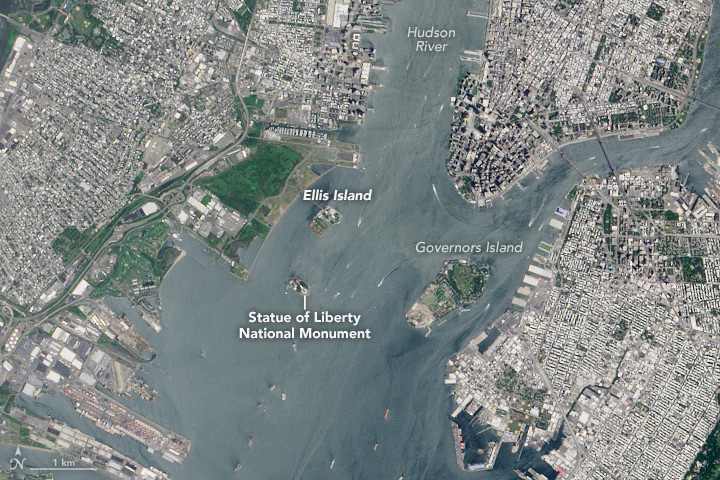 Statue of Liberty National Monument and Ellis Island
Statue of Liberty National Monument and Ellis Island
 Tallgrass Prairie National Preserve
Tallgrass Prairie National Preserve
 Tonto National Monument
Tonto National Monument
 Voyageurs National Park
Voyageurs National Park
 Yellowstone National Park– Landscape
Yellowstone National Park– Landscape